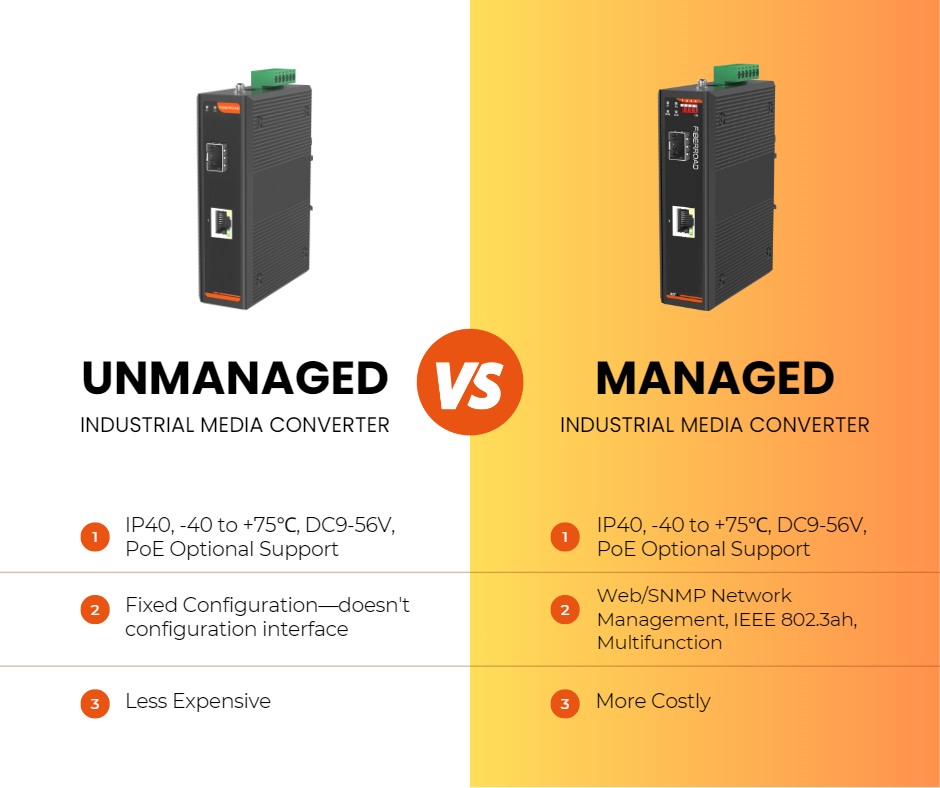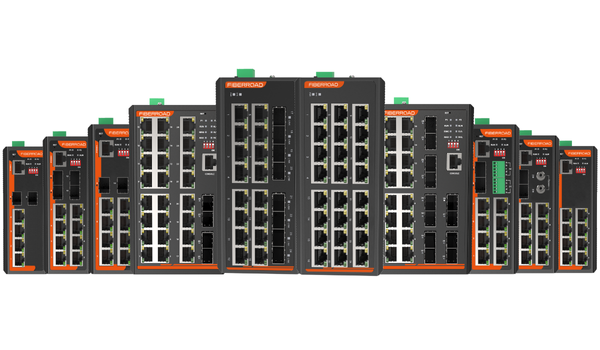Industrial Media Converters are essential in today’s data-driven world, allowing businesses to connect their disparate network technologies and achieve seamless communication. These devices convert signals from one media type to another, enabling companies to integrate different machines and systems into a cohesive whole. However, with so many options available on the market, choosing between unmanaged and managed Industrial media converter can be overwhelming for business owners. In this blog post, we’ll examine the benefits and drawbacks of each type of industrial media converter and help you determine which is best suited for your company’s needs.

What is an Industrial Media Converter?
An Industrial Media Converter is a device that facilitates communication between different network types. It converts signals from one media type to another, allowing businesses to connect their disparate technologies and create an integrated system. These devices are commonly used in industrial settings, where various machines and systems must work together seamlessly.
Industrial Media Converters come in many forms, including copper-to-fibre converters, multi-port converters, and serial-to-ethernet converters. They are extremely versatile and can be used with several types of networks such as Ethernet, Fast Ethernet or Gigabit Ethernet standards.
These devices play a critical role in ensuring uninterrupted communication between machines on the factory floor or within the organization. Without them, data transmission would not be possible across different network infrastructures.
Furthermore, they provide cost-effective solutions for companies looking to upgrade their existing infrastructure without having to completely overhaul it. With so many options available on the market today, it’s essential for businesses to understand the differences between managed and unmanaged media converters before selecting one that best suits their needs.
Unmanaged vs Managed Industrial Media Converters
When it comes to Industrial Media Converters, there are two main types: unmanaged and managed. The primary difference between the two is that a managed industrial media converter allows network administrators to have control over the device, while an unmanaged one does not.
An unmanaged media converter is essentially “plug-and-play.” It requires no configuration or management from the user. These devices are ideal for small networks or those with limited IT resources. They are typically less expensive than their managed counterparts but lack advanced features such as VLAN support and Remote Configuration.
On the other hand, a managed industrial media converter provides greater control and flexibility over the device’s settings. Administrators can monitor traffic in real-time, configure security protocols and remotely troubleshoot issues from a central location. Managed converters also offer better scalability for larger networks with multiple subnets.
Ultimately, which type of converter you choose will depend on your specific needs and requirements. If you have a small network that doesn’t require advanced features, then an unmanaged converter may suffice. However, if you have a larger network requiring more granular control over traffic flow and security measures, then investing in a managed converter might be worth considering.

What are the benefits and features of each type?
Unmanaged and Managed Industrial Media Converters both have their unique benefits and features that cater to different business needs.
Firstly, Unmanaged Media Converters are cost-effective and straightforward devices that require no configuration. They are designed for simple point-to-point applications where network management is unnecessary. They come with a plug-and-play feature, which means they can be installed quickly without any technical expertise or knowledge.
On the other hand, Managed Media Converters offer more advanced features such as remote monitoring and control capabilities via IEEE 802.3ah. This type of media converter allows network administrators to manage and configure multiple devices from a central location using SNMP (Simple Network Management Protocol). Also, managed converters provide better security for your network by allowing you to set up user accounts with specific permissions.
Choosing between an unmanaged or managed industrial media converter depends on your business requirements. If you need a basic setup at an affordable price without much complexity then unmanaged would be ideal. However, if you want more advanced capabilities in terms of networking management then managing would suit you best.
What is IEEE 802.3ah? IEEE 802.3ah is a standard that defines Ethernet in the First Mile (EFM), which provides a cost-effective way to extend Ethernet services to customers over existing copper and fiber access networks. The standard specifies two physical layers: one for point-to-point links, such as fiber optic connections between carrier facilities, and another for point-to-multipoint links, such as DSL or cable modem technologies used by residential or business subscribers. IEEE 802.3ah also defines several link management protocols that enable service providers to monitor and control network performance parameters, including bandwidth allocation, fault detection, and service level agreement (SLA) enforcement. By using this standard, carriers can offer high-speed Internet access, voice-over-IP (VoIP) telephony, video streaming and other multimedia services to end-users with minimal investment in new infrastructure equipment or software development efforts.
How to choose the right Industrial Media Converter for your Business?
Choosing the right Industrial media converter for your business can be a daunting task. With so many options available, it’s important to consider your specific needs and requirements before making a decision.
Firstly, you’ll need to determine whether you require an unmanaged or managed media converter. Unmanaged converters are typically less expensive and easier to set up but offer limited configuration options. Meanwhile, managed converters provide greater flexibility but come at a higher cost.
Consider the number of ports required on the converter as well as the type of port connections needed. This will depend on your existing network infrastructure.
Look for features such as auto-negotiation and Auto-MDIX which allow devices with different speed capabilities to communicate effectively without manual intervention.
It’s also important to check compatibility with other network devices such as switches, routers and firewalls in order to avoid any potential issues down the line.
Ultimately, choosing the right media converter comes down to understanding your specific networking requirements and finding a solution that fits within your budget constraints while providing all the necessary features and functionality.






